EHR satisfaction survey 2017: After years of frustrations, user wish-list turns positive

In our third annual Healthcare IT News EHR Satisfaction Survey we asked hospital leaders, IT professionals and clinicians to rate their inpatient electronic health records systems.
Their answers are illustrative of the hopes and frustrations of the folks on the front lines, for whom EHRs have become an intrinsic and indispensable part of their work.
Questions included: How satisfied are you with the features of your EHR? What do you like best about the software? What would you change? How do you rate user interface and experience? How is its interoperability with other systems, and with medical devices? Security? Modularity? Vendor support services?
[Compare to last year: 2016 EHR satisfaction survey results]
The readers who contributed to our research run the gamut of hospital jobs: chief information officer, IT director, clinical engineer, application analyst, facility risk manager, telehealth coordinator, nursing informaticist and more.
As the inpatient market becomes ever more consolidated, it may not surprise you to know that those professionals tend to use just a handful of vendors: Epic (30 percent), Cerner (25 percent) and Meditech (11 percent). CPSI, Allscripts and McKesson – the latter two of which are now one and the same company – came in at a bit more than 5 percent of respondents each.
Overall, responses tended toward constructive criticism with suggestions on areas to build upon. It is a sign that innovation is taking hold among some products, and that certain EHRs are maturing into systems that users can appreciate.
What follows is our report on what hospitals want most from their EHR systems.

Surprise: Users are satisfied overall
Nearly half ranked their vendor at least an 8 out of 10 for satisfaction.
Perhaps counter-intuitively – given the semi-regular stream of studies claiming that physicians and hospital staffs widely dislike their EHRs, bemoaning them as burdensome data entry systems that distract them from patients – respondents to our poll actually seem fairly happy with their inpatient system.
When asked, "What was your overall satisfaction with the EHR system?" nearly 42 percent of respondents gave their system either an eight or nine on a scale of 1-10. More than 5 percent gave it the top "Most Satisfied" score.
Only 8.5 percent of respondents, meanwhile, ranked their satisfaction as a one, two or three on the "Least Satisfied" side of the ledger.
That says something. Most of the systems in use by the hospitals polled have the basic blocking and tackling down pat, and have more advanced features working fairly well.
Our survey showed EHR implementations scoring highest on interface/visual appeal (nearly half of respondents scored this an eight, nine or 10); security features (60 percent gave this one of the top three scores) and the responsiveness of vendor support services (more than 33 percent gave this a nine or 10).
Areas for improvement? Interoperability, both with other clinical systems (20 percent scored this a one or two) and with an array of critical medical devices (slightly better, with scores tending to be between five and eight), is not where most users want it to be. Same goes for the ability to accommodate modular features (a similar cluster of middle-of-the-road scores).
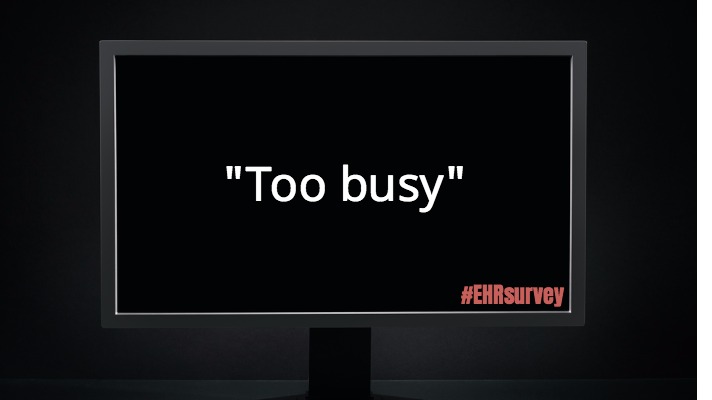
User interface and visual appeal
Users want a cleaner, more intuitive interface.
An area that seemed to receive special scrutiny was user experience and design. Asked what they'd like their vendors to do better, many users cited suboptimal user interface.
One said the UI is "too busy," which sometimes makes it "hard to find specific menus." Another said: "2017 version screens are too bright."
Those aren't just aesthetic concerns. Design choices can potentially impact patient safety: "Developers removed many of the lines and boxes to make the system appear sleek, but staff miss the lines and boxes," wrote one respondent. "Staff are struggling to read the font with our less expensive 22-inch monitors."
[Also: Doctors loathe their EHRs, right? Not these physicians]
One survey-taker said the layout was "not intuitive for users," and another sought more attention to the system's appearance – specifically the "ability for end-users to customize their views, pages, etc. for their workflow." A third sought a "cleaner more concise UI," giving users the "ability to hide the functions they don't use."
Those who expressed favorable opinions of design and interface tended to be a bit more plainspoken – "visually appealing," "front end is ok," one person liked "the look.”

User experience
In terms of UX, users want fewer clicks, user-friendly features and “voice AI” functionality.
"Usability in some areas" is a problem, said one poll-taker, who asked for a workflow that didn't depend on so many mouse clicks, or at least a software where a "single click (is) allowed instead of having to double-click."
It’s worth noting that for the third year in a row, some version of "fewer clicks!" occurred over and over throughout the responses to our EHR satisfaction survey.
One respondent said the vendor should "make it user-friendly." It was clear, from his or her experience, that the system was designed for "billing and auditing, not about the patient.”
Turning that around, another reader argued that "when interfaces are accomplished they work like champs. It is one record – you can see what procedural areas document and inpatient areas document in one record. We like the best practice alerts and the medication alerts."
Other users liked certain specific features – everything from "pop up for forms, customization of pages and tracking boards" to the "ability to submit a range to view documents" to "ease of use and the ability to do some customization."
One, interestingly, thought it would be cool to have "a Siri type feature with voice recognition that would walk the clinician through documentation/order entry, etc."
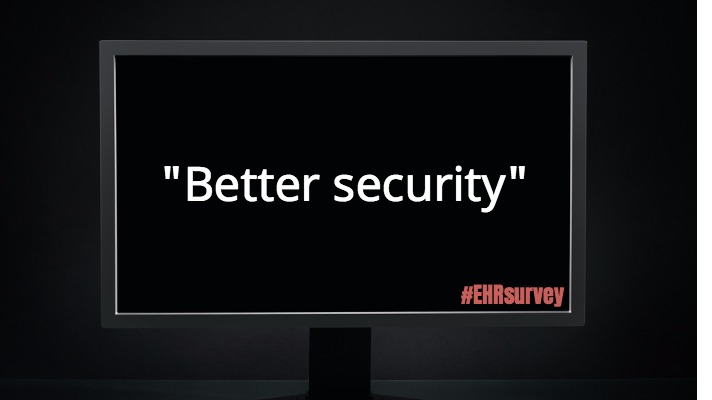
Security features
Users want stronger security and a cloud vendor that can lock data down.
Despite its central importance to the storage, exchange and use of protected health information, security functionality got very little mention in our reader's responses, even as it scored fairly high across the board.
One user simply wished for "better security," without elaborating beyond that.
Another respondent who uses a cloud-based xpEHR, expressed satisfaction that security was not the concern of his team. "It is hosted at the vendor's data center," this respondent said. "They have to worry about the data security."
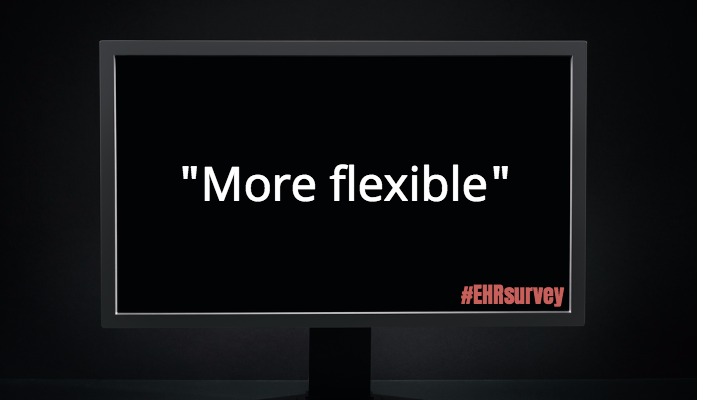
Interoperability
Users want flexible interoperability with medical devices, other software systems and apps.
Interoperability – both with medical devices and with other EHRs – was another story. It's still an area that leaves plenty to be desired, and the hospital staffers who took our EHR survey had lots to say about it.
A reader asked for "more interoperability over just integration." A third wanted "interoperability with other apps" outside the vendor's own modules.
"Greater flexibility and accommodation of team-based care," chimed in a reader. "Much better data extraction. Easier, more flexible, and more affordable data sharing and interfacing."
On the plus side, many IT pros and clinicians had some specific things to be happy about with their systems, especially those that were mature and well-connected.
[Also: Interoperability shows progress, but it's slow progress at best]
One said the EHR was "fully integrated to include inpatient, outpatient, pharmacy, laboratory, radiology and other components. It also incorporates population health, women's health, pediatric, prenatal tools."
"Integrated applications provide a one-patient, one-record comprehensive view across all venues in our healthcare system," said another satisfied survey-taker.
When it came to medical devices, the numerical scores were marginally better, but also suggested there’s room for improvement.
"Better interoperability with devices," one respondent wished for. "Improve the ability to cross into different systems such as IV pumps and monitors smoothly," a second requested.
One reader wanted "better integration to receive discrete data from other clinical software systems – anesthesia meds and vital sign data, I&O; cath lab integration of the same information or intuitive workflow structure."
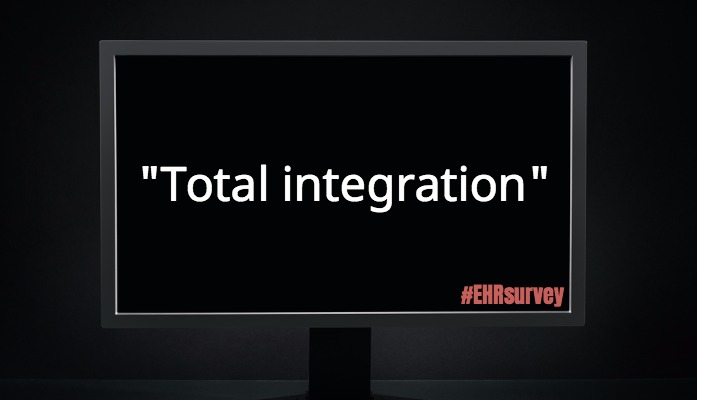
Modular features
Integration with other modules, interoperability with outside apps, consistency in design.
As the to-do lists of hospitals evolve, so does the desire to soup up their EHR systems with bolt-on functionalities to serve those specific demands.
One reader wanted "interoperability with other apps" outside the vendor's own modules. Another suggested that vendors should more be more proactive about taking on that integration work, while a third requested "consistency in module design; total integration of all modules in the EMR."
A respondent noted that some modules are a little immature. "It's very hard when every module is built to look completely different," added a reader.
A poll-taker explained that eliminating of reducing functionality variances among individual modules could make troubleshooting a whole lot easier.
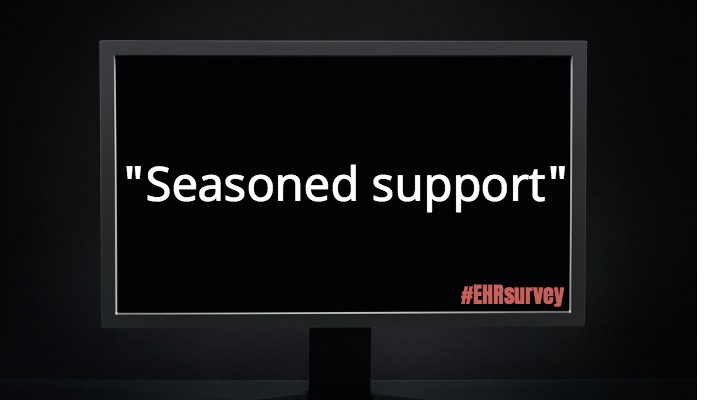
Quality of support services
Users want strong account managers, knowledgeable and skilled tech support staffers.
When challenges arise, it's helpful to have a reliable vendor support staff to help. Most respondents are satisfied with the help their vendors made available.
"Great account managers, client success manager, support team and upper management," said one hospital staffer, while another lauded their vendor's support team, complete with an exclamation point: "implementation processes and staff excellent!"
One liked the skill set and knowledge" of the support staff, especially the efficiency with which they were able to do updates on the system.
Naturally, some customers were dissatisfied. One wanted "seasoned support resources," "less staff turn-over," or "better support backend." More harshly, a reader said the vendor’s “support is no good, they’re a monster.”
Overall, the positives certainly shined through in this year's survey. For every frustrated end user who said their EHR was "so convoluted that even the company has trouble figuring it out" it's gratifying to remember that there are others who are satisfied with the systems they log into and work with every day.
Could it be that years of frustrations with inpatient IT system notwithstanding, hospital staffers are finally starting to … like their EHRs?
Let's see what next year's survey finds.
Twitter: @MikeMiliardHITN
Email the writer: mike.miliard@himssmedia.com

























